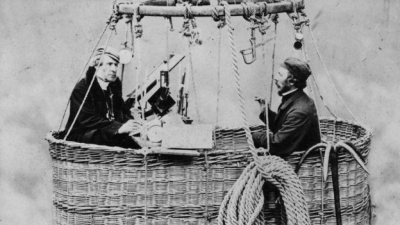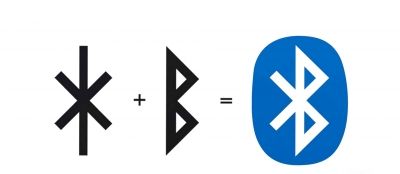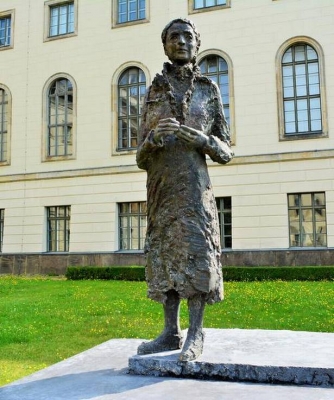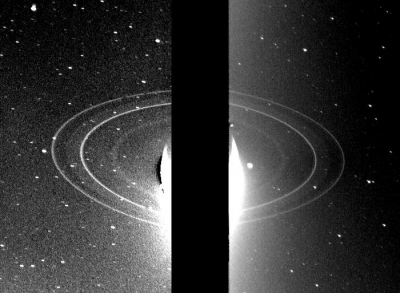Haber, ammonia, and a complex legacy
Nitrogen is crucial to plant life, and nitrogen-based fertilizers were essential for crops at the start of the 20th Century to produce more food. Even though there is limited supply of usable nitrogen on the Earth's surface, its atmosphere is an inexhaustible source that can be tapped into. Fixing nitrogen from air was a long-sought-after objective by chemists - something that was finally accomplished by German chemist Fritz Haber.
Born into a well-off German-Jewish family in 1868, Haber displayed an early inclination towards chemistry. Studying in several universities and earning a doctorate in organic chemistry in 1891, Haber went on to master physical chemistry during his time as an instructor at a polytechnic in Karlsruhe.
Growing anti-Semitism
By 1901, Haber had married Clara Immerwahr, a brilliant chemist and the first woman to obtain a doctorate from Breslau University. Even though she also converted from Judaism to Christianity like Haber, the couple were still subject to anti-Semitism (discrimination against Jews).
At the turn of the century, there was a growing murmur especially among scientists, that the world wouldn't be able to cope with the increasing food demand of humanity's rising population. While it was well-known by this time that nitrogen-based fertilizers would be able to enhance crop-yield and thus meet the upcoming demand, fixing nitrogen from air was yet to be achieved.
Fixing nitrogen
Atmospheric nitrogen is rather inert, meaning that it doesn't react easily with other chemicals to form compounds. Nitrogen fixation is the process by which molecular nitrogen in the air is converted into ammonia or other related nitrogen compounds, either in the soil, aquatic systems, or even industrially.
It was Haber who came up with a method that let nitrogen gas directly react with hydrogen gas under high pressure and a catalyst to produce ammonia. On September 27, 1910, Haber received a U.S. patent for the production of ammonia.
"Bread out of thin air”
The ammonia thus produced could be put to industrial use creating huge amounts of fertilizers. The agricultural fertilizers stepped-up the crop yield to a large extent, putting to rest the fear of famines and producing enough food to sustain humanity's growing needs. "Brot aus luft, which literally meant "bread out of thin air, was the popular German catchphrase used at the time to refer to this miraculous turnaround.
Haber always wanted to prove his patriotism and he therefore threw his efforts behind the German cause during World War 1. He experimented with chlorine gas and developed a new weapon, poison gas, which he believed would shorten the war.
Haber supervised the first deployment of his methods at Ypres, Belgium in 1915 and he was promoted to captain in the German army. On the night he celebrated his promotion at a party in his home in Berlin, Clara, who condemned her husband's weapon works and was becoming frustrated with d life at home, died by suicide.
His wife's suicide didn't delay his deployment as he rushed back to the war front. But many others started voicing their opinion about Haber's wartime role and what they saw as the promotion of a barbaric weapon. When he was awarded the Nobel Prize in Chemistry in 1918 for the synthesis of ammonia from its elements, it naturally didn't go well with everyone.
Flees Germany
While Haber continued to strive patriotically, he could sense that he was still caught in the web of anti-Semitism. When the Nazis were growing in power, he was still perceived as a Jew and his position soon became untenable He fled Germany and went into exile, but was unable to find any work or a place to settle, dying eventually of a heart attack in 1934.
Apart from the poison gas.,Haber's research was also later developed into the Zyklon process This was used by the Nazis to kill millions of people in their concentration camps, including some of Haber’s own extended relatives.
Despite the importance of his work to produce ammonia, which still aids agriculture around the world, Haber left behind a complicated legacy, largely because of his efforts on the war front German-born theoretical physicist Albert Einstein summed up his friend's life and his relationship with his homeland in the following way: "Haber’s life was the tragedy of the German Jew- the tragedy of unrequited love."
Picture Credit : Google





